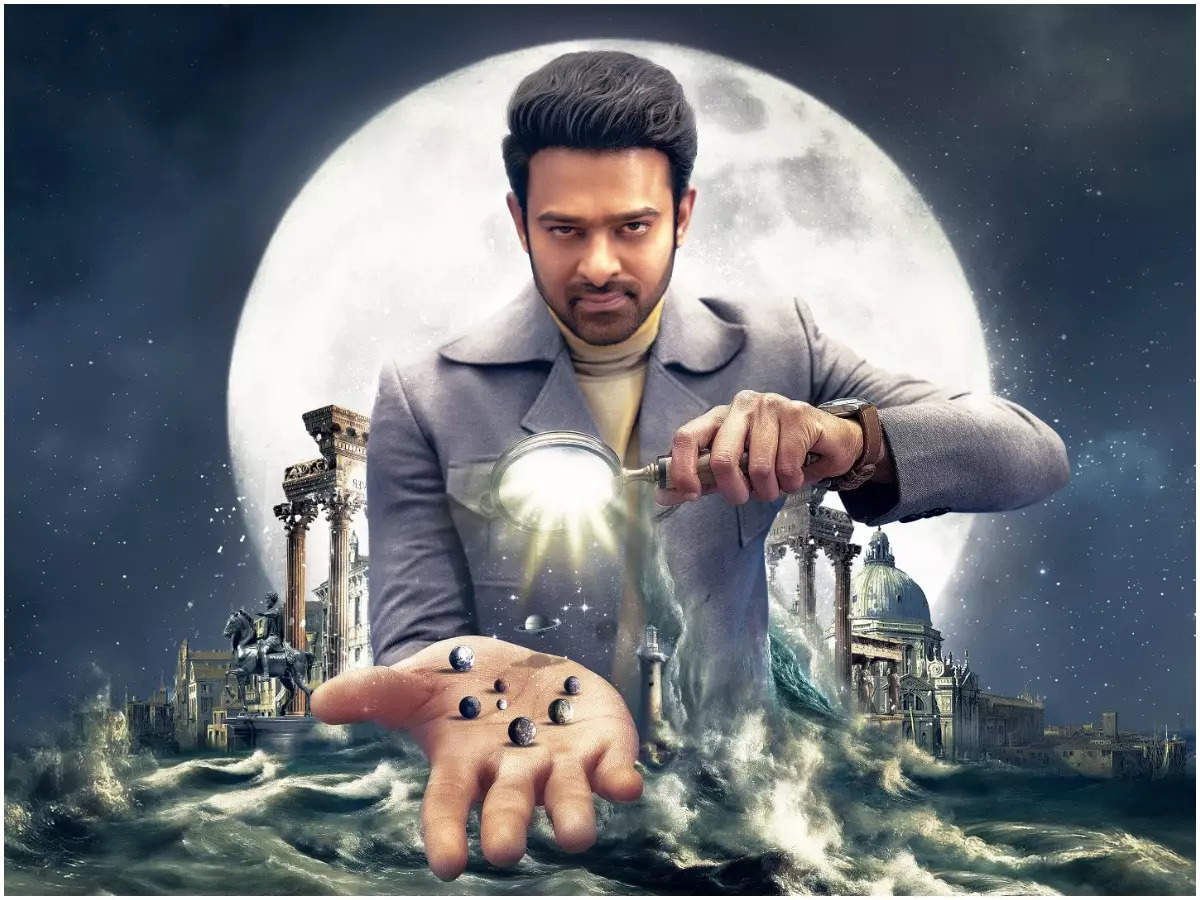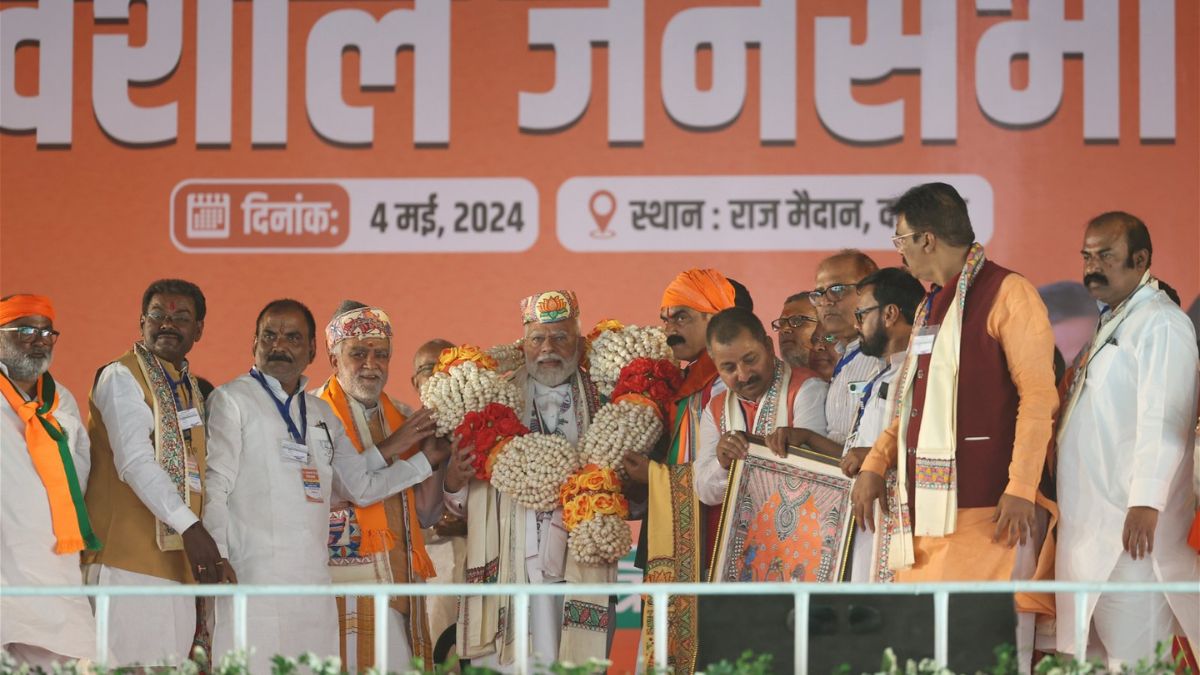Radhe Shyam, in a conversation with us, spoke volumes (believe it or not!) about how tough it is to make a pan-India film, how we all are in experimentation mode, and that when it comes to movies — India is unstoppable now. Blending in with the spirit of Mumbai, the chat summed up with a cutting
chai and
vada pav. Get the mood? Read on…
You have another period drama pitched on a lavish canvas coming up, Radhe Shyam. Post Baahubali, you have won
national recognition and fame, but with that, the stakes are now also higher with every film. How does living up to the constant pressure and hype feel?
The point is, I don’t want to do only big films. With
Radhe Shyam, we initially thought that we could make it in 100-150 crores, but the producers didn’t want to compromise. We went to Georgia, where the schedule was planned for 40-50 days, but we had to wrap up in 12 days. In Italy, we had another 10-15 days of shoot, again we had to cancel that and create the set in India. Even in Hyderabad, we had to cancel many schedules because of the COVID situation. We did the best that we could in the given circumstances. I am planning some comedy films, too, so yes, I don’t always want to do films on such a big scale.

But, more often than not, would you say that you get offered these mega projects. The makers and the audience now envision you in a certain way. As an artiste, is that a tad problematic?
That is a problem. The audience wants to see Prabhas as Baahubali, and they want that image every time. For me, it is not always exciting. Yes, of course, I enjoy doing it when I take on a project, as we grew up watching films like
Superman, Spider-Man and we will continue to make and watch such big films and superheroes on screen, and I will too. But at the same time, I also want to do smaller films. I want to do something different in terms of storytelling and entertaining the audience, and I am planning that.
Radhe Shyam is a big-budget film, but my character Vikram Aditya is not a superhero, he is powerful when it comes to his profession.
Radhe Shyam directed by Radha Krishna Kumar is your first multilingual (Tamil, Telugu, Kannada, Malayalam and Hindi) love story, does that make you nervous?
For me, doing a love story was so exciting. I have done it in Telugu, but the Tamil and Malayalam audience hasn’t seen it. This is my first multilingual love story, so I am a little stressed. The way we have shown vintage Europe, it has rarely been seen in Indian films, and I am keen to know how it will be received by the audience.
The concept of a pan-India film was known and used in cinematic parlance earlier, but the huge success of Baahubali only popularised it further. And now, we hear the term being used a lot by actors from South film industries, who are already pan-India stars or on their way to becoming one. Would you say, in this regard, Baahubali was a turning point for Indian cinema, and since then, there has been no looking back?
I think that is the way it should be. Films like
Mughal-E-Azam, Sholay, Dilwale Dulhania Le Jayenge or
Mayabazar (Telugu and Tamil epic fantasy film), among other landmark films in different languages, were seen by audiences across. I think our films should be categorised first as an Indian film, instead of being identified language-wise. You could say that in recent times, Baahubali became that starting point, but I think we had reached a phase where it was bound to happen. All of us are evolving, with that our films are evolving, too. The fact is that, right now, we are all still in an experimental stage, and filmmakers across the country are experimenting with their cinema. It doesn’t mean that they are thinking of big-budget films. They are looking at stories with big ideas.
For filmmakers and actors, it must be quite tricky to understand the pulse of the audience when making a pan-India film. In different parts of our country, we are used to watching a certain kind of cinema and the sensibilities also vary. So, telling a story that satiates the entertainment palate of viewers across India, seems like a mammoth task.
Yes!
Baahubali: The Beginning was an experiment, with
Baahubali 2: The Conclusion we were luckier as we knew that the audience was waiting for it. Again, Saaho was an action thriller, and it was only Sujeeth’s (director) second project. We were wondering…will people watch it? It was made on such a huge scale. So, everyone has questions on what is right. The problem is that we don’t exactly have a reference point — like what will the Bengal audience think, how will the audience in Punjab react? We don’t know, and we don’t have the answers. Hence, I said that we are all experimenting in this space. It is tough to understand which script will connect with the pan-India audience. Like, in the Telugu market
Saaho did very well, but not as well in the Tamil market. The Hindi audience liked it more than the Telugu speaking audience. So, it’s interesting. Everyone is in research mode. Even when you are talking about Bollywood movies, if you grew up in Mumbai, your taste might be different from someone else living outside of the city, but consuming Hindi films. So, imagine appealing to audiences across a country as big and diverse as ours — is a really challenging task. The stakes are also higher. If you make Baahubali in 100 crores, it would be safer. But if it is made in 440 crores, the gamble is higher, but then we get a film like what we saw. Rajamouli and I had doubts regarding which audience is going to watch the film.

Stars down South have a massive fan following, however, pan-India stardom at some level also involves finding an audience in Bollywood cinema? Do you agree?
India’s biggest film industry is Bollywood. So, if you say pan-India film or pan-India actor, Bollywood is a big part of it, and you can’t ignore it or deny that. You can’t just do Tamil and Telugu films if you are a pan-India actor.
We are also seeing a huge number of actors from Bollywood, more than ever before, doing big projects down South. What do you think is drawing them southwards — subjects, filmmakers or the possibility of massive collections that South Indian films are garnering?
Now filmmakers want to reach audiences across, and the audience wants to watch all kinds of cinema. In the South, our markets are small, but yes, we make commercial movies, which become big hits. Tamil and Telugu markets combined could be bigger than Bollywood. But my point is, if we want to make the biggest cinema, and we want to reach our fans globally, why can’t our cinema and actors reach a wider audience across our own country first. I feel it is already too late, this should have happened long ago.
So, what you are saying is that we should head towards a direction where most films will be multilingual, instead of being just in Hindi, Telugu, Tamil, etc. And eventually, actors won’t be region-specific?
Many films are going to go that way in the future. We should be seen as one big film industry from India. Our cinema needs to reach every other place in the world, and that is the fight. Maybe we can make a film like
The Lord of the Rings or
Ben-Hur, but we need to have money for that, and we need all our audience which is such a huge population to watch it. Like films from China have reached Hollywood, then why not us? Why are we still saying Tamil, Telugu, Hindi? Why? Our journey towards that has started, and that is the exciting part.
On that note, working in Hindi films has been a new process for you. Given your reserved personality, did it take time to feel at home here?
During the first
Baahubali, it was very stressful for me. For Telugu films, in 14 years, I had never given as many interviews in my life as I gave for
Baahubali 1. I told Rana (Daggubati) and Tamannaah (Bhatia) to talk to the media so that I could take a backseat. I had never experienced 40 people sitting in front of me and asking questions. Till that time, I wasn’t even comfortable with the Telugu press (laughs!). I talk a lot when I get comfortable. I have a problem with starting a conversation. The media here has been really sweet, and now I am far more comfortable, as you can see.
You seem to be really excited about this being a romantic film. In real-life, are you a romantic at heart?
Maybe I am, else I wouldn’t have done a film like
Radhe Shyam (smiles!).







More News
Heeramandi: Netizens Point Out Errors in Sanjay Leela Bhansali’s series Heeramandi The Diamond Bazaar | – Times of India
Ranbir Kapoor carries adorable baby Raha in his arms as he visits Varun Dhawan at his residence with wife Alia Bhatt – See photos | – Times of India
Farhan Akhtar drops a fiery poster of ‘Agni’ on the occasion of International Firefighters Day – See photo | Hindi Movie News – Times of India